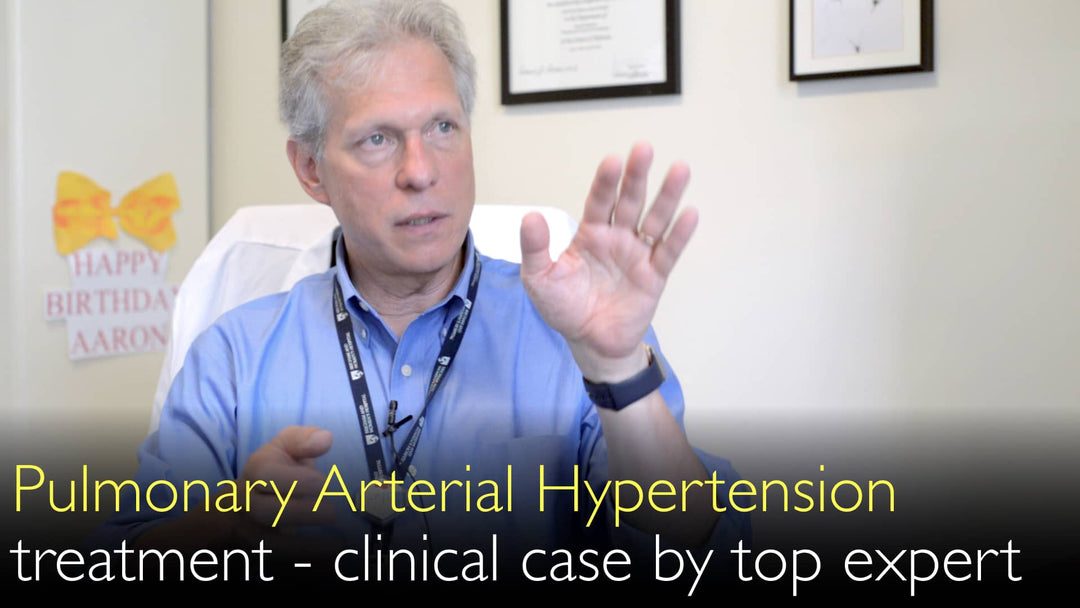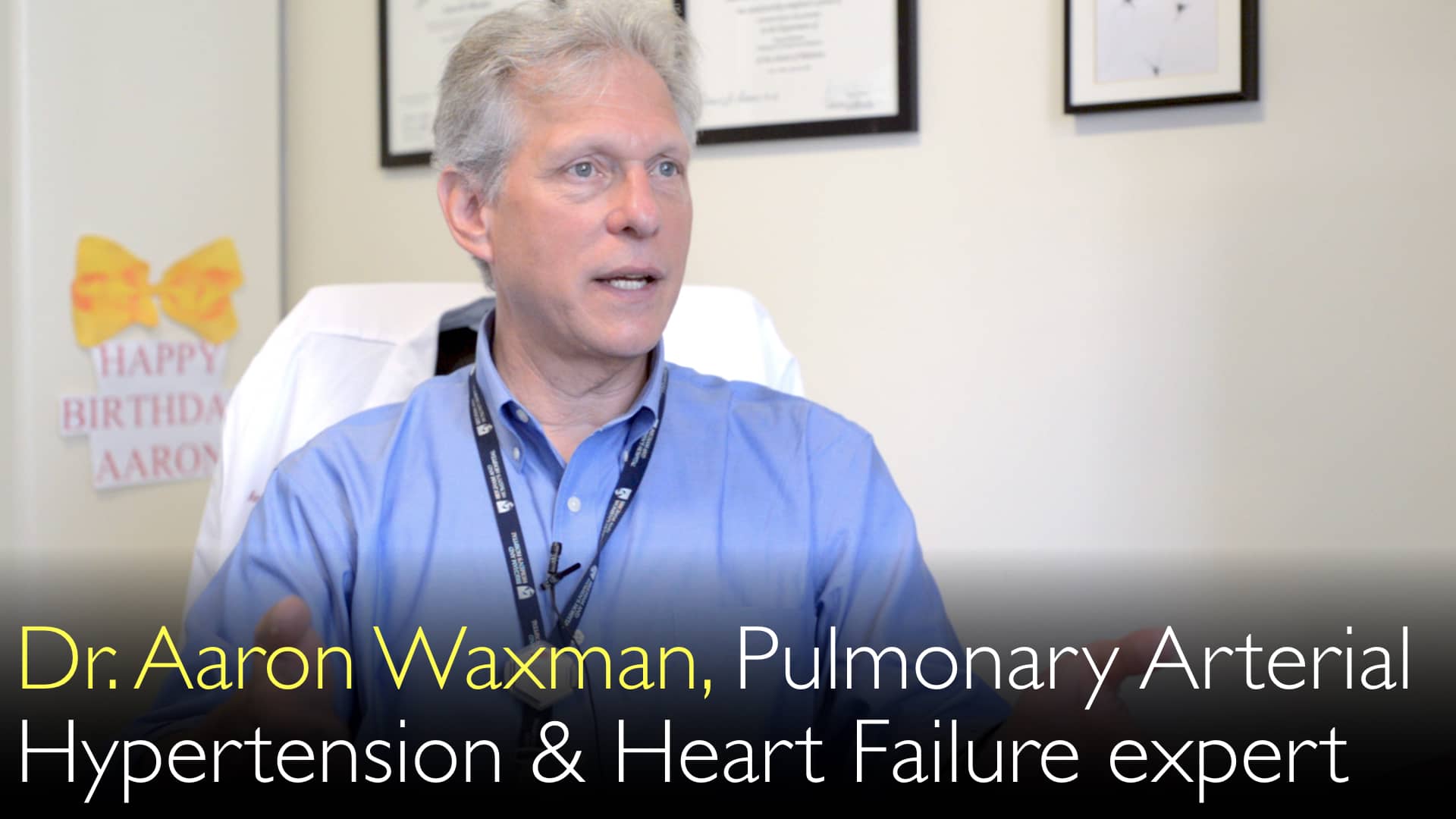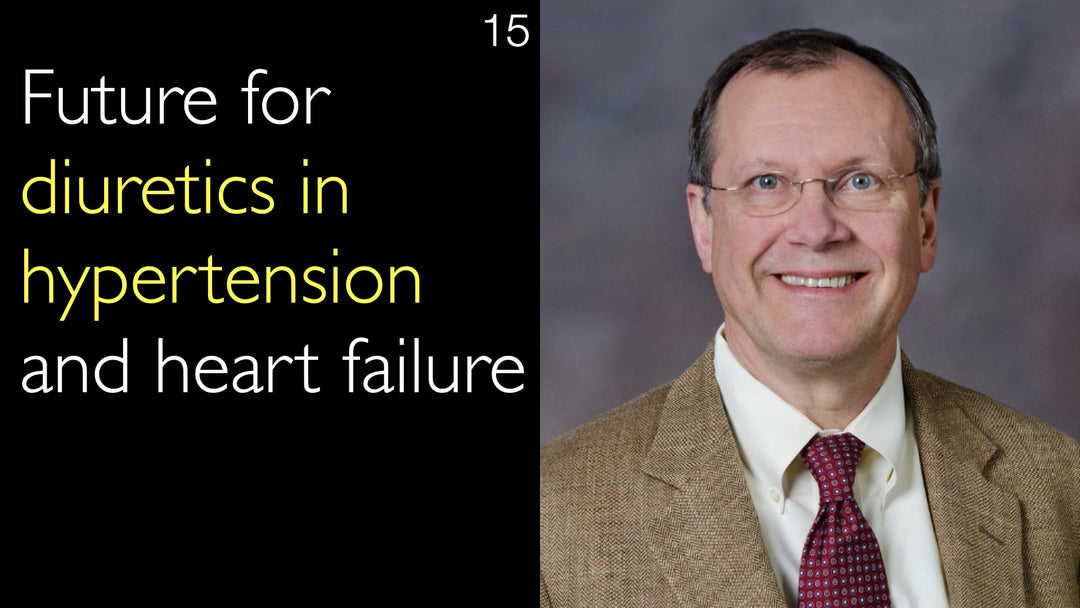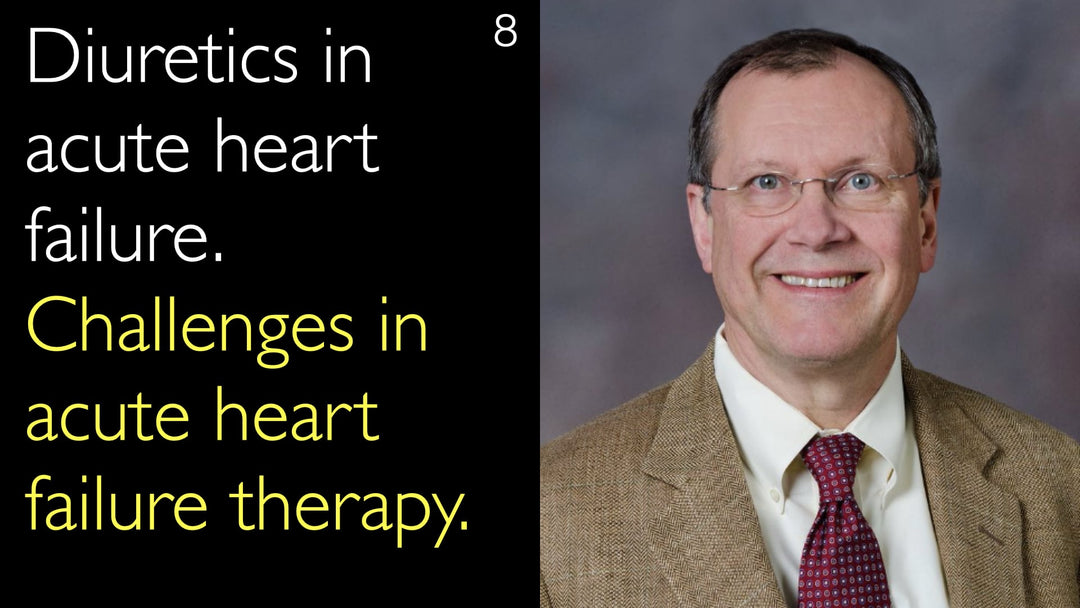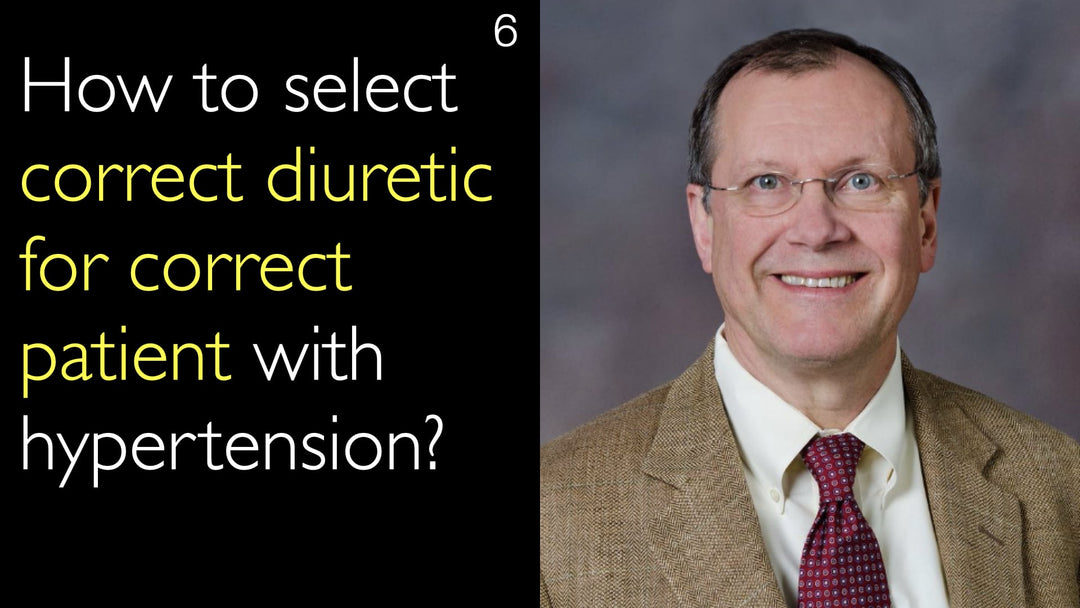מומחה מוביל ביתר לחץ דם ריאתי ואי-ספיקת לב ימנית, ד"ר אהרון וקסמן, MD, מסביר אסטרטגיות טיפול חדשניות למחלות ריאה ולב מורכבות. הוא דן בתפקיד התפקוד המיטוכונדריאלי הלקוי בהנעת פתולוגיית המחלה. ד"ר וקסמן מפרט את השימוש בטיפול משולב, מערכות מתן מושתלות, ותרופות ממוקדות כמו טקרולימוס. הוא מדגיש את הפוטנציאל של טיפול בתאי גזע להשבת המטבוליזם התאי התקין. גישות חדשניות אלו שואפות להפוך את השינוי הפתולוגי בכלי הדם ולשפר את תוצאות המטופלים.
אסטרטגיות טיפול מתקדמות ליתר לחץ דם ריאתי עורקי ולאי-ספיקת לב ימנית
קפיצה לפרק
- גישות טיפול חדשניות
- מערכות מתן תרופות מושתלות
- טיפול אימונוסופרסיבי ממוקד
- טיפול בתפקוד מיטוכונדריאלי לקוי
- פוטנציאל טיפול בתאי גזע
- הזדמנויות לשימוש חוזר בתרופות
- תמליל מלא
גישות טיפול חדשניות ליתר לחץ דם ריאתי
ד"ר אהרון וקסמן, MD, מתאר טיפולים רב-מודליים מתקדמים לחולים עם יתר לחץ דם ריאתי עורקי אידיופתי ואי-ספיקת לב ימנית. מקרים מורכבים אלה דורשים לעיתים קרובות גישות טיפול משולב אגרסיבי. הטיפול כולל בדרך כלל פרוסטציקלינים תוך-ורידיים בשילוב עם אנטגוניסטים לאנדותלין ומעכבי PDE5 כמו סילדנפיל או טאדאלפיל.
ד"ר אהרון וקסמן, MD, מדגיש כי הטיפולים הנוכחיים מייצגים את גבול היכולת של הטיפול הקונבנציונלי ביתר לחץ דם ריאתי עורקי. הכרה זו הובילה לפיתוח אסטרטגיות טיפול חדשניות החורגות מהפרוטוקולים הסטנדרטיים.
מערכות מתן תרופות מושתלות
ד"ר אהרון וקסמן, MD, דן במערכות מתן תרופות מושתלות מלאה מהפכניות הממתינות כעת לאישור FDA. מערכות אלה מבטלות את הצורך בצנתרי Hickman חיצוניים הנושאים סיכוני זיהום משמעותיים. על ידי השמת כל הרכיבים פנימית, מכשירים אלה מפחיתים דרמטית את סיכוני הסיבוכים הקשורים בעירוי תרופות ממושך.
המערכות המושתלות מייצגות התקדמות משמעותית בניהול יתר לחץ דם ריאתי עורקי. ד"ר אהרון וקסמן, MD, מציין שטכנולוגיה זו יכולה לשנות את האופן שבו חולים מקבלים טיפול תרופתי רציף תוך שיפור איכות החיים.
טיפול אימונוסופרסיבי ממוקד
ד"ר אהרון וקסמן, MD, מסביר שימושים חדשניים בטיפולים אימונוסופרסיביים אנטי-דלקתיים במינון נמוך ליתר לחץ דם ריאתי עורקי. תרופות כמו טקרולימוס, המשמשות בדרך כלל לדיכוי חיסוני בהשתלות, מראות הבטחה בהיפוך אנומליות גנטיות נרכשות המניעות שינוי מבני בכלי הדם הריאתיים.
בשיתוף פעולה עם עמיתים מאוניברסיטת סטנפורד, ד"ר וקסמן טיפל בחולים עם יתר לחץ דם ריאתי עורקי מתקדם באמצעות טקרולימוס. גישה ממוקדת זו מתייחסת לתפקודי Pathway (נתיב מטבולי) חריגים התורמים להתקדמות המחלה בכלי הדם הריאתיים.
טיפול בתפקוד מיטוכונדריאלי לקוי במחלות ריאה
ד"ר אהרון וקסמן, MD, מזהה תפקוד מיטוכונדריאלי לקוי כגורם קריטי ביתר לחץ דם ריאתי עורקי ובאי-ספיקת לב ימנית. חולים מראים גישות מטבוליות לא יעילות, עם מעבר לגליקוליזה במקום זרחון חמצוני. אנומליה מטבולית זו תורמת לקוצר הנשימה שחווים חולי מחלות ריאה.
כמומחה לטיפול נמרץ, ד"ר וקסמן צופה שנזק מיטוכונדריאלי או תרדמת (hibernation) מתרחשים במצבים קריטיים שונים כולל הלם ספטי. הוא מדגיש שטיפולים ממוקדים המסוגלים ל再生 (regenerate) מיטוכונדריה יכולים לחולל מהפכה בטיפול במחלות קריטיות מרובות.
פוטנציאל טיפול בתאי גזע לאי-ספיקת לב
ד"ר אהרון וקסמן, MD, דן במחקרי תאי גזע פורצי דרך aimed at addressing שינויים מטבוליים באי-ספיקת לב. מחקר מראה שתאי גזע יכולים להתמזג עם תאים חולים ולהעביר מיטוכונדריה, ומשקמים ביו-אנרגטיקה תקינה. גישה זו מייצגת דרך חדשה לטפל בתפקוד המטבולי הלקוי הבסיסי בלב כושל.
במודלים ניסיוניים, תאי גזע מזנכימליים שהוזלפו directly into העורק הכלילי הימני הדגימו הישרדות והתרבות remarkable. ד"ר וקסמן מאמין שגישות תאי גזע אלה יכולות לשנות fundamentally את האופן שבו clinicians מטפלים בחולי מחלות ריאה ואי-ספיקת לב long-term.
הזדמנויות לשימוש חוזר בתרופות
ד"ר אהרון וקסמן, MD, מדגיש את הפוטנציאל המשמעותי של שימוש חוזר בתרופות (medication repurposing) בטיפול במחלות ריאה. תרופות קיימות רבות, כולל סטטינים, מדגימות effects on תפקוד מיטוכונדריאלי שיכול להועיל לחולי מחלות ריאה. גישה זו מציעה both חיסכון בעלויות and accelerated זמינות טיפול.
ד"ר וקסמן maintains גישה פתוחה לרעיונות טיפול חדשניים that show הגיון פיזיולוגי, מטבולי וביוכימי. He emphasizes that concepts מדעיים solid deserve investigation regardless of השימוש המקורי intended שלהם.
תמליל מלא
ד"ר אנטון טיטוב, MD: תאי גזע, תפקוד מיטוכונדריאלי לקוי, אי-ספיקת לב ימנית, ויתר לחץ דם ריאתי. רופא מוביל מראה את המורכבות של אבחנה מדויקת וטיפול רפואי ממוקד בחולי לב וריאה today. האם תוכל לדון במקרה קליני? אולי situation that could illustrate יתר לחץ דם ריאתי עורקי ואי-ספיקת לב ימנית?
ד"ר אהרון וקסמן, MD: There are many clinical cases. Here are the clinical situations that come to mind. We obviously have many patients who present with symptoms of יתר לחץ דם ריאתי עורקי ואי-ספיקת לב ימנית. Some patients presented with very advanced lung disease.
We are using multi-modality treatments. These are patients who generally have יתר לחץ דם ריאתי עורקי אידיופתי. Patients present in אי-ספיקת לב ימנית. We start patients on aggressive therapy with intravenous prostacyclins. We also use combination therapy with endothelin antagonists and PDE5 inhibitors, like sildenafil and tadalafil.
But that is the limit of our ability to treat patients with יתר לחץ דם ריאתי עורקי ואי-ספיקת לב ימנית. We have worked with companies to develop novel treatment approaches to יתר לחץ דם ריאתי עורקי ואי-ספיקת לב ימנית. That includes fully implantable medication delivery systems.
We are waiting for FDA approval on one such implantable treatment system at this time. But we have been able to get rid of Hickman catheters. We put everything inside the body of a patient. We limit the infection risk and complication risk with the medication delivery systems.
We have also been able in those patients with יתר לחץ דם ריאתי עורקי to think outside the box. We use targeted therapy. We use anti-inflammatory immunosuppressive therapies in low doses. That might help reverse some of the abnormal pathway functions that are driving lung blood vessel remodeling.
An example is using a medication like tacrolimus. It is normally used for transplantation and immunosuppression. In low doses, we have evidence that tacrolimus may reverse some of the genetic abnormality that is acquired in pulmonary arterial hypertension lung disease.
We work with collaborators at Stanford University. We have been treating some of our more advanced pulmonary arterial hypertension patients with tacrolimus. There is another targeted therapy that we use in these patients that targets mitochondrial function.
Because we have learned in all of these patients that there is dysfunction of mitochondria. There is an inefficient approach to metabolism. Patients with right-sided heart failure tend to shift to glycolysis rather than oxidative phosphorylation.
We use different medications that we know might do the reversal of that pathological process. We have started treating some patients with pulmonary arterial hypertension. These patients have responded well to these treatments.
It is very interesting! Because you showed that there is a mitochondrial dysfunction in many lung diseases. The mitochondria are energy-generating power stations of the cell. It could explain some of the shortness of breath that the patients with lung disease are experiencing.
ד"ר אנטון טיטוב, MD: Yes, mitochondria. As an intensive critical care specialist, I see patients with severe lung disease and septic shock. Patients come to the intensive care unit with other types of shock you want to address. It is probably ultimately the mitochondria that are getting damaged or become dysfunctional or become hibernating.
We should have targeted therapies that can get into the cell, get into the mitochondria, and regenerate mitochondria. Then we will probably change how we treat patients with septic shock. One of the goals when we started our stem cell studies is this.
When we see patients in heart failure, there is a clear shift in metabolism to glycolysis from oxidative phosphorylation in the myocardium. We thought that because of data from in vitro studies, stem cells and diseased cells can fuse and transfer mitochondria and restore normal bioenergetics.
There are experiments when you take stem cells and you mix them with diseased cells. We thought, why can't we do that in the living heart? That is why we did our initial stem cell studies to infuse stem cells into the heart.
We were looking at mesenchymal stem cells infused directly into the right coronary artery in these models. We were able to see that these stem cells go into the heart. Stem cells proliferate. They were surviving much longer inside the heart than any other prior stem cell studies had shown.
These are novel approaches that could change the way we treat lung disease and heart failure patients in the long run.
ד"ר אהרון וקסמן, MD: Well, mitochondria are very interesting. Statins also work on the mitochondria.
Yes, a number of medications work on mitochondria. That gets to the topic of medication repurposing. A lot of medications that we use for one treatment indication, we are learning that the same medication may be useful in other disease indications.
This not only could save money, but it could save time to getting medications approved for treating these lung diseases. We are open to any novel idea. Sometimes someone comes up with an idea and it makes physiologic, metabolic, biochemical sense. Then that idea is worth investigating!


